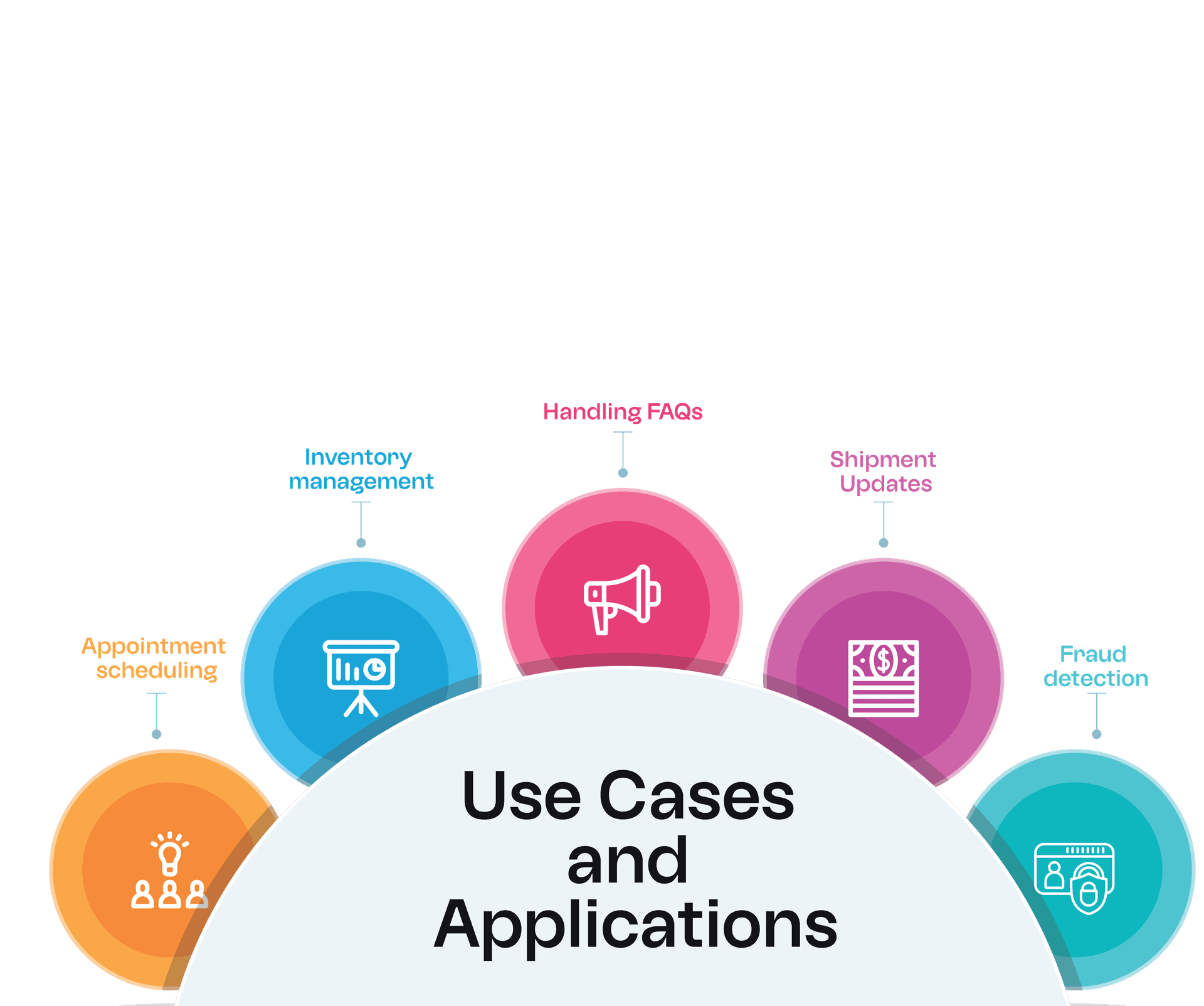The Buzz of Voice Agents and how they work in 2025
The voice AI market is booming, with speech recognition technology projected to reach $29.28 billion by 2026. AI voice agents are one sector driving this growth as they evolve from basic command responders to advanced conversation partners.
What’s changed? Well, for starters, the technology driving these tools has gotten a lot better. Modern voice agents combine lightning-fast real-time speech recognition with smart language models and voices that actually sound human. Under the hood, these systems are doing something remarkable. They turn sound waves into meaning, figuring out what people want and creating responses that make sense (all within seconds).
Below, we’ll walk you through everything you need to know about AI voice agents in 2025, including what they are, how they work, and where they’re delivering value.
What are voice agents?
AI voice agents are the smart systems that power the natural conversations you're having with machines, whether it's ordering a pizza, checking your bank balance, or scheduling a doctor's appointment. They’re digital assistants that understand speech, make sense of what you're asking for, and respond with their voice.
Old phone systems made you press buttons and follow scripts like Press 1 for sales, but today's voice agents follow complex conversations, remember context from earlier exchanges, and respond to interruptions or changes in topic just like a human would.
Aren’t They the Same as Voice Assistants Like Siri?
The answer to that is yes and no. As of 2025, 8.4 billion voice assistants are in use worldwide, and 27% of users actively use voice search on their mobile devices. Voice assistants like Siri and Alexa have gained widespread adoption, which is good news for AI agents.
This allows users to see AI voice agents as a more advanced version of voice assistants they’re already accustomed to. While they share similarities in that they use speech recognition and machine learning (ML) algorithms to converse with users, the two serve very different purposes.

Voice assistants are designed to be more consumer-focused, offering general support for a variety of tasks. On the other hand, AI voice agents are more business-oriented and are designed for specialized task execution in a variety of environments.
How do voice agents work?
Modern AI voice agents aren't just a single technology. They’re most commonly integrated systems with specialized components working together.
Here's what the most fundamental components look like for the common cascading voice agent architecture:
1. Speech-to-Text
This front-end component converts spoken words into text through Automatic Speech Recognition (ASR). Today's systems can transcribe different accents, background noise, and even multiple speakers talking over each other with high accuracy.
2. Language understanding
Once the speech is transcribed into text, natural language processing comes into play to interpret its meaning. NLP helps the AI voice agent:
- Understand user intent and context
- Identify keywords and extract relevant details
- Generate an appropriate response
For example, for an input like “Can you reschedule my appointment for this Wednesday, 11 AM?” NLP will extract the intent of appointment rescheduling and the relevant details, such as 11 AM and Wednesday
3. Text-to-speech
Once the generative AI model powering the agent generates a response or performs the task, text-to-speech (TTS) converts the text output back into speech.
The TTS system allows the voice agent to communicate with the user naturally. The most advanced systems even match their tone to the emotional state of the user.

How to Build and Deploy a Voice Agent?
Most AI voice agents are being built on the core framework of STT-LLM-TTS. Here’s how that works:
- Speech to Text (STT) receives and processes the input.
- A large language model (LLM) performs reasoning, task execution, and response generation.
- Text-to-speech (TTS) converts the generated text response into voice output.
Getting a voice agent up and running doesn't need to be a massive IT project. While this conversational pipeline can create natural, human-like interactions, building it in-house can present challenges. However, using an AI agent builder and a speech orchestration platform can bring down the development, testing, and deployment time from months to days.
Here's how to turn your business’s voice agent ambitions into reality:
1. Define your business use case
Start by identifying exactly what problem you're trying to solve. The most successful voice agents address specific pain points rather than trying to do everything. You’ll also need to define what metrics you’ll use to measure success.
Ask yourself: Which processes involve repetitive conversations? Where do customers face friction? What tasks take up staff time that could be better spent elsewhere?
2. Choose the right Model
Whether you’re going the open-source route or relying on a model from OpenAI, make sure to select a platform that aligns with your use case and can be integrated with your enterprise data through APIs or other modes as you continue to build and deploy AI agents.
Consider solutions that support multiple languages, scalability, and compliance requirements.
3. Design conversation flows
This is where you use your voice agent to map out user journeys. The primary path in which everything proceeds as planned should be addressed first, followed by variations and edge cases.
Create sample dialogues that show realistic exchanges, including clarification requests and error recovery. The more you invest in thoughtful conversation design up front, the less frustrating your voice agent will be for actual users.
4. Add integrations and test agent
To customize agent behavior, give plenty of examples, as modern voice agents learn from them. This is also where you'll customize the agent's voice, personality, and knowledge base.
You’ll also need to connect your voice agent to the systems it needs to access, whether that's your CRM, booking platform, or product database. Test with real users early and often, paying particular attention to points where conversations break down.
5. Deployment
Before full deployment, conduct extensive testing using real-world scenarios. Start with a limited release to gather feedback before a full rollout. Begin with internal users, then a small customer segment, and expand only when performance meets your quality thresholds.
6. Monitoring and optimization
Once live, the real work begins. Your AI voice agents should evolve constantly based on real conversation data and user feedback. Schedule regular reviews to identify improvement opportunities and keep your agent getting smarter over time.
Where are they making an impact?

AI voice agents have moved beyond novelty to become practical business tools across every industry. Here are a few places they’re delivering real value already:
Customer support automation
AI voice agents now manage the majority of support calls in leading organizations. They're not just responding to FAQs, either. They’re solving complex issues, such as troubleshooting network problems or processing returns without human intervention.
These AI agents can be leveraged by enterprises in various settings, such as retail outlets, restaurants, car dealerships, and field service providers.
Healthcare coordination
Medical practices use voice agents to schedule appointments, deliver medication reminders, and even offer preliminary consultations. These voice agents also make sure HIPAA compliance to safeguard sensitive patient information.
Moreover, voice agents can also act as simulators to improve on-the-job performance, supplementing traditional training methods.
Financial services
Voice agents walk customers through complex processes like loan applications by gathering required information conversationally rather than through tedious forms. They enable secure, compliant, and efficient interactions.
Plus, agents can even help with outreach to reactivate dormant accounts and cross-sell financial products.
Retail personalization
Voice shopping is becoming popular, with agents that can automatically handle order changes, remember your preferences, and recommend related products. In contrast to previous systems, they can comprehend contextual requests such as "Add the blue one in a size large."
Internal operations
Apart from customer-facing functions and interactions, voice agents can also be leveraged by enterprises to automate or assist with crucial business processes such as recruitment and sales. Companies see major efficiency gains using voice agents for tasks like inventory management, time tracking, and maintaining equipment logs. It’s especially helpful in environments where typing is impractical.
The future of AI voice agents
Voice agents have made significant progress in a short time. The clumsy, scripted interactions of the past have transformed into smooth conversations that effectively solve problems and save time.
The best implementations come from teams that see voice agents as enhancing human capabilities rather than completely replacing them. When designed thoughtfully, these systems handle routine interactions while freeing your team to focus on more complex, high-value work.

See what voice AI can do for your business. Impleko AI lets you test advanced speech recognition and speech understanding models to get a hands-on feel for what's possible.
